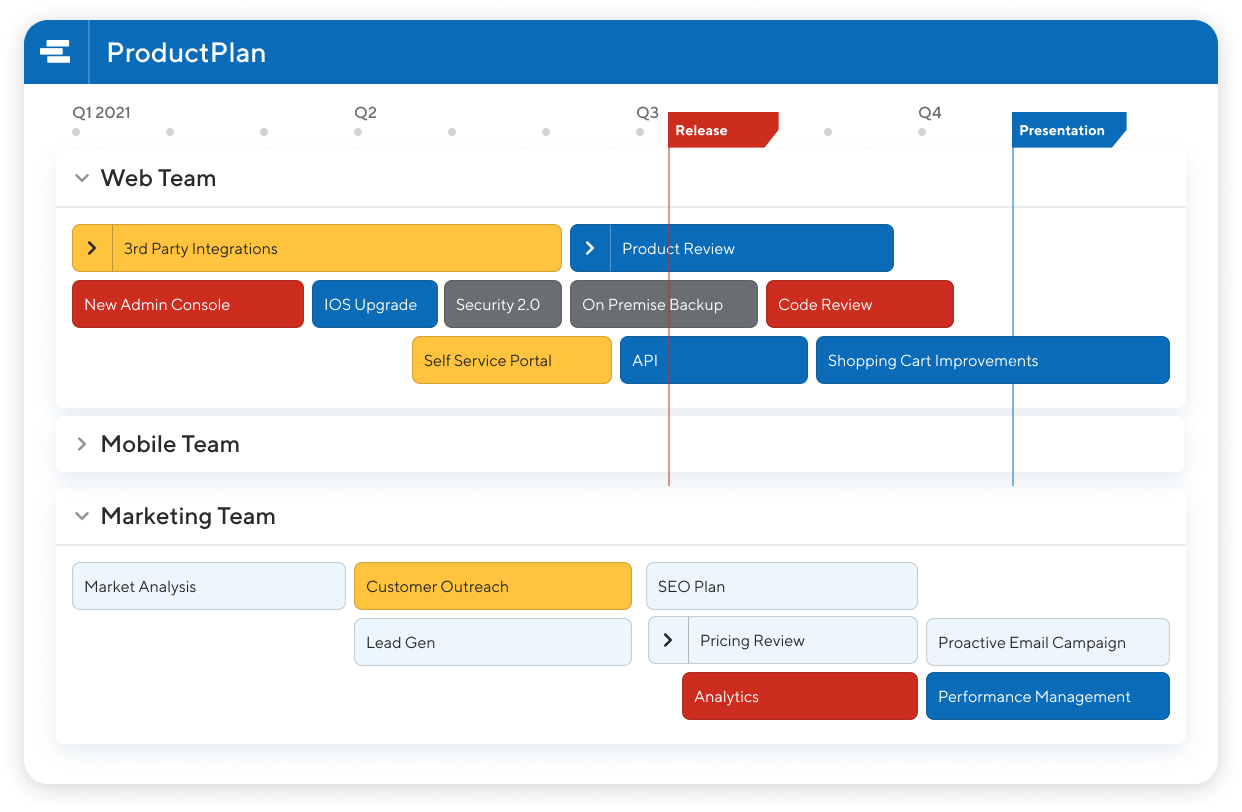What Is a Product Operating Model?
An operating model describes how an organization delivers value and unites cross-functional teams within the organization with a single purpose. It merges the why (strategy) with the how (process) to create the what (operating model). Most importantly, it seeks an essential alignment within an organization to develop a product that delivers the most significant value to customers.
“A well-defined and articulated operating model is the what — the bridge between strategy and day-to-day operations that guides the team, provides the context, and enables the behaviors that will realize the strategy and vision.” (Operating Models: Delivering on Strategy and Optimizing Processes)
Specifically, a product operating model centers the product in all functions and operations to deliver the greatest value to customers via a product offering.
Why a Product Operating Model Is Customer-Centric (vs. Product-Centric)
It is critical to discern that a product operating model is customer-centric and not product-centric. Most importantly, customers are at the heart of a successful product operating model.
Customer-centric organizations focus on understanding their user and buyer personas, learning about their challenges, and building solutions to address those challenges.
Therefore, a product-centric approach doesn’t always center on solving a customer problem. Yet, a product-centric model focuses on the details of an organization’s products above other considerations, including its customers’ needs.
The Relationship Between Digital Transformation and an Organization’s Operating Model
Despite deep investments and focus, 80% of digital transformations fail.
Mark Barbir, SVP of Engineering at ProductPlan, asserts that a primary driver for this astonishing number of failures can result from the fundamental lack of understanding of product transformation relative to traditional operating models.
“Many leaders fail to realize that digital transformation must be synonymous with product transformation and the ability for an organization to be successful,” says Barbir. “The global pandemic has taught us that businesses who remain agile and open to digital transformation will be successful, but that doesn’t guarantee changes in how a company operates.”
Read Implementing an Effective Product Transformation Strategy on the ProductPlan blog.
How the Model Helps Organizations Scale
When businesses scale, new challenges are likely to surface — most often in greater complexity, higher costs, and waning efficiency.
Communication between functional groups and across the organization also tends to take a hit as information silos take root and grow. Invariably, the unified goal of creating and delivering value strains under the weight of these challenges.
For example, in The Importance of Embracing a Product Operating Model, Craig Strong, a Forbes Councils member, asserts that the best way to overcome these challenges is to “become product-driven and embrace a customer-focused product operating model.”
Strong continues: “A product operating model is a capability not just for growth but for survival by improving the chances for customer retention. The operational and cultural benefits of a product operating model can improve the insights and interconnectivity of your business for improved agility, cost reduction, and innovation potential. Lastly, as more companies improve their products and services this way, businesses that become product-driven should be in the strongest position to survive in the short term and excel in the long term.”
Related Terms:
product-led growth / product excellence / business transformation / objectives and key results (OKRs) / agile transformation / product launch / product adoption / retention / user experience (UX) / customer experience (CX) / key performance indicator (KPI) / product operations / product centric / customer empathy / product strategy / product vision
